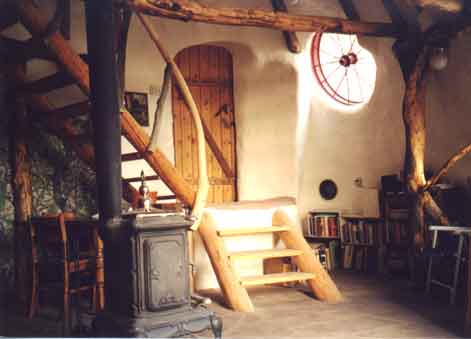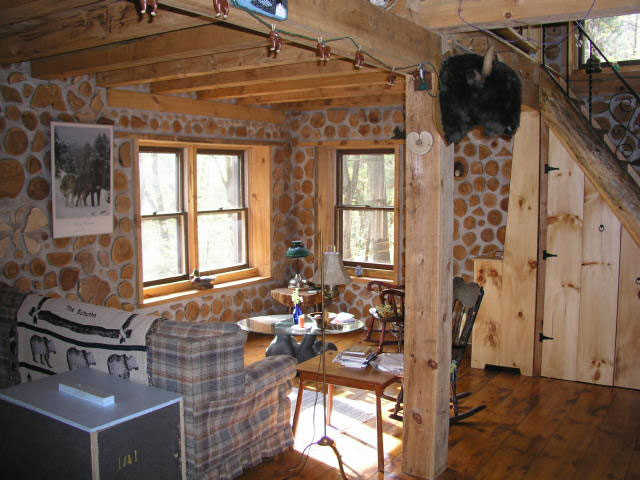When I saw the story on cordwood home designs, it sparked my curiosity. This home is made of firewood logs. It is green and energy efficient!
A framework of heavy timbers supports the roof. Inside the timber framework, 16-inch long chunks of firewood are stacked to build the walls. This house is built with cedar, but tamarack, pine and poplar
work well. Mortar holds the logs in place and foam insulation fills any voids in the middle.
To save money, some builders use sawdust as insulation. The walls of a cordwood home have nearly twice the
insulation value of a traditional home.
The ends of the logs are visible inside and outside, giving the house a distinctive look.
Glass bottles embedded in the walls bring beams of colored light into the living space. The wood chunks can be arranged in purposeful designs.
Rob Roy stated on the
Green Home Building site: After studying the wide array of "natural building" techniques for several years, I have come to accept cordwood as one of the greenest of all: it uses what is often considered a waste material, creates an insulated wall that requires no further finishing or maintenance over time, and can be done by relative novices...what more could you want?"
As you can see below, the cordwood home is rustic, unique, and beautiful!

























